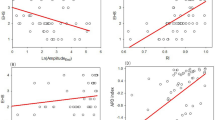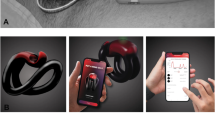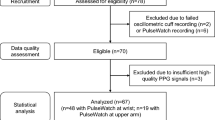Abstract
The golden standard for measuring nocturnal erections is the RigiScan Plus. It is a relatively big and uncomfortable device dating from the previous century. The aim of this perspective is to conceptualize a user-friendly sensor that can be used at home for monitoring nocturnal erections. A literary search is carried out to explore the physiological changes during nocturnal tumescence and detumescence that can be measured non-invasively. Five sensor concepts are considered: plethysmography for penile arterial pulse, displacement sensor for axial length, strain gauges for radial rigidity and circumference, temperature sensors for measuring skin and cavernosal temperature, and a saturation sensor to measure hypoxia in cavernosal tissue during maximal rigidity. We think that due to practical issues, measuring penile length during sleep is impossible. Further research is recommended to investigate the remaining sensor concepts. Whether a combination of these techniques is favorable or only one of them should be studied more thoroughly.
This is a preview of subscription content, access via your institution
Access options
Subscribe to this journal
Receive 8 print issues and online access
$259.00 per year
only $32.38 per issue
Buy this article
- Purchase on Springer Link
- Instant access to full article PDF
Prices may be subject to local taxes which are calculated during checkout




Similar content being viewed by others
References
Shamloul R, Ghanem H. Erectile dysfunction. Lancet. 2013;381:153–65.
NIH Consensus Conference. Impotence. consensus development panel on impotence. J Am Med Assoc. 1993;270:83–90.
Elhanbly S, Elkholy A. Nocturnal penile erections: the role of rigiscan in the diagnosis of vascular erectile dysfunction. J Sex Med. 2012;9:3219–26.
Karacan I, William RL, Thornby JI, Salis PJ. Sleep-related penile tumescence as a function of age. Am J Psychiatry. 1975;132:932–7.
Elhanbly SM, Abdel-gawad MM, Elkholy AA, State AF. Nocturnal penile erections: a retrospective study of the role of rigiscan in predicting the response to sildenafil in erectile dysfunction patients. J Adv Res. 2018;14:93–6.
Jannini EA, Granata AM, Hatzimouratidis K, Goldstein I. Controversies in sexual medicine: use and abuse of rigiscan in the diagnosis of erectile dysfunction. J Sex Med. 2009;6:1820–9.
Bradley WE, Timm GW, Gallagher JM, Johnson BK. New method for continuous measurement of nocturnal penile tumescence and rigidity. Urology 1985;26:4–9.
Udelson D, Park K, Sadeghi-Najed H, Salimpour P, Krane RJ, Goldstein I. Axial penile buckling forces vs rigiscan™ radial rigidity as a function of intracavernosal pressure: why rigiscan does not predict functional erections in individual patients. Int J Impot Res. 2000;11:327–37.
Timm GW, Elayaperumal S, Hegrenes J. Biomechanical analysis of penile erections: penile buckling behaviour under axial loading and radial compression. BJU Int. 2008;102:76–84.
Borowitz E, Barnea O. Hemodynamic mechanisms of penile erection. IEEE Trans Biomed Eng. 2000;47:319–26.
Bancroft J, Bell C. Simultaneous recording of penile diameter and penile arterial pulse during laboratory-based erotic stimulation in normal subjects. J Psychosom Res. 1985;29:303–13.
Tal R, Mueller A, Mulhall JP. The correlation between intracavernosal pressure and cavernosal blood oxygenation. J Sex Med. 2009;6:2722–7.
Purohit RC, Beckett SD. Penile pressures and muscle activity associated with erection and ejaculation in the dog. Am J Physiol. 1976;231:1343–8.
Promodu K, Shanmughadas K, Bhat S, Nair K. Penile length and circumference: an Indian study. Int J Impot Res. 2007;19:558–63.
Kukkonen TM, Binik YM, Amsel R, Carrier S. Thermography as a physiological measure of sexual arousal in both men and women. J Sex Med. 2007;4:93–105.
Solnick RL, Birren JE. Age and male erectile responsiveness. Arch Sex Behav. 1977;6:1–9.
Brow SL, Seftel AD, Strohl KP, Herbener TE. Vasculogenic impotence and cavernosal oxygen tension. Int J Impot Res. 2000;12:19–22.
Challoner AVJ, Ramsay CA. A photoelectric plethysmograph for the measurement of cutaneous blood flow. Phy Med Biol. 1974;19:317–28.
Weiss K, Worn H. The working principle of resistive tactile sensor cells. In: Proceedings of the IEEE International Conference on Mechatronics and Automation. 2005;471–6.
Zhu F, Spronck JW, Heerens WC. A simple capacitive displacement sensor. Sens Actuators A: Phys. 1991;26:265–9.
Chen X, Zheng X, Kim JK, Li X, Dong-Weon L. Investigation of graphene piezoresistors for use as strain gauge sensors. J Vacuum Sci Technol. 2011;29:29–34.
Matsukawa T, Ozaki M, Nishiyama T, Imamura M, Kumazawa T. Comparison of infrared thermometer with thermocouple for monitoring skin temperature. Crit Care Med. 2000;28:532–6.
Sahatiya P, Puttapati SK, Srikanth VVSS, Badhulika S. Graphene-based wearable temperature sensor and infrared photodetector on a flexible polyimide substrate. Flexible and Printed Electronics. 2016;1:025006.
Padmanabhan P, McCullough AR. Penile oxygen saturation in the flaccid and erect penis in men with and without erectile dysfunction. J Androl. 2007;28:223–8.
Hsu GL, Hsieh CH, Wen HS, Hsu WL, Wu CH, Fong TH, et al. Anatomy of the human penis: the relationship of the architecture between skeletal and smooth muscles. J Androl. 2013;25:426–31.
Alnaeb ME, Alobaid N, Seifalian AM, Mikhailidis DP, Hamilton G. Optical techniques in the assessment of peripheral arterial disease. Curr Vasc Pharmacol. 2007;5:53–9.
Author information
Authors and Affiliations
Corresponding author
Ethics declarations
Conflict of interest
The authors certify that they have no affiliations with or involvement in any organization with a financial interest in the outcome of the subject discussed in this manuscript. No financial assistance was received in support of this study.
Additional information
Publisher’s note Springer Nature remains neutral with regard to jurisdictional claims in published maps and institutional affiliations.
Rights and permissions
About this article
Cite this article
Edgar, R., Trip, E.J., Wolterink, G.J.W. et al. New methods for the monitoring of nocturnal erections. Int J Impot Res 34, 1–7 (2022). https://doi.org/10.1038/s41443-020-00365-9
Received:
Revised:
Accepted:
Published:
Issue Date:
DOI: https://doi.org/10.1038/s41443-020-00365-9
This article is cited by
-
Nocturnal penile tumescence devices: past, present and future
International Journal of Impotence Research (2023)



